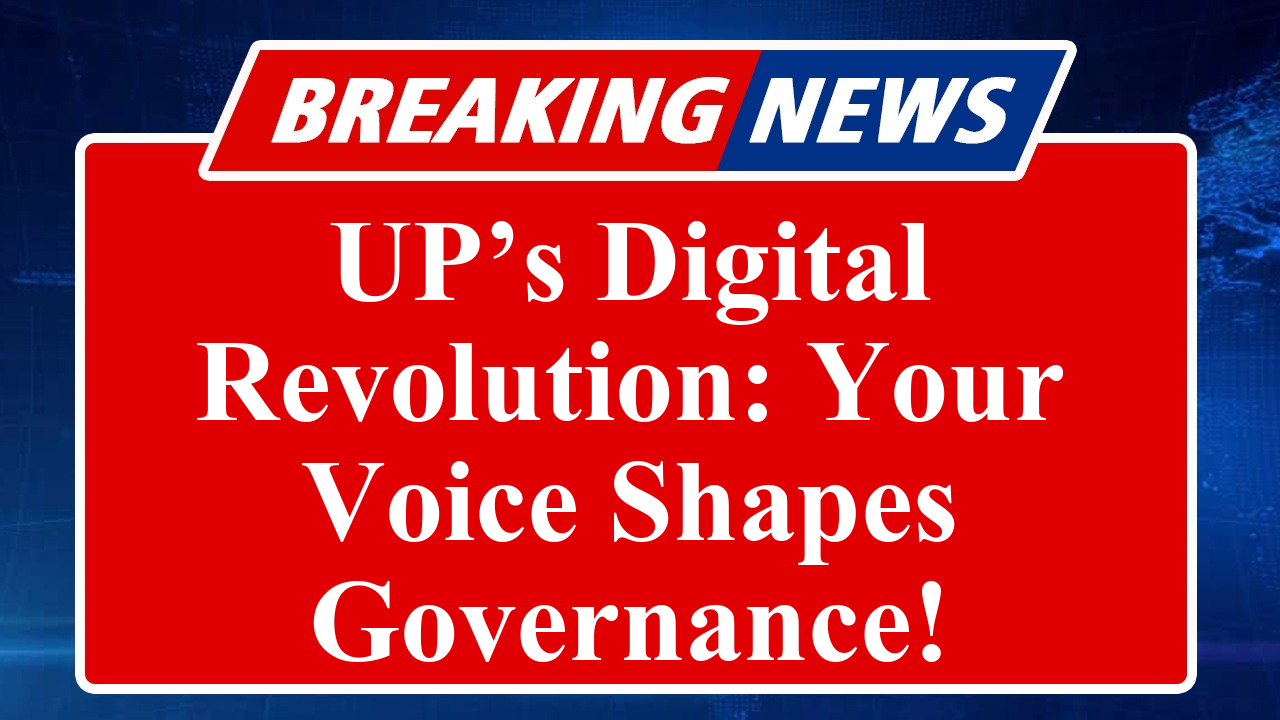“Uttar Pradesh is revolutionizing governance with digital citizen feedback portals, enhancing transparency and public participation. These platforms empower residents to voice concerns, track services, and influence policies in real time. From urban planning to rural service delivery, UP’s digital initiatives are bridging the gap between citizens and the government, fostering accountability and responsive administration.”
UP’s Digital Push: Citizen Feedback Portals Reshape Governance
Uttar Pradesh, India’s most populous state, is embracing the digital revolution to enhance governance through innovative citizen feedback portals. These platforms, integrated into the state’s broader e-governance framework, are designed to collect real-time input from citizens, streamline service delivery, and promote transparency. By leveraging technologies like mobile apps, web portals, and data analytics, UP is fostering a participatory model of governance that aligns with the Digital India initiative.
The state government has rolled out several digital platforms, such as the Jan Sunwai portal and the UP e-Service portal, to facilitate direct communication between citizens and authorities. Jan Sunwai, launched in 2018, allows residents to lodge complaints, track their status, and provide feedback on public services like healthcare, education, and infrastructure. As of August 2025, the portal has resolved over 90% of the 2 crore complaints registered since its inception, with an average resolution time of under 15 days, according to official data from the UP government’s citizen services dashboard.
These portals utilize advanced technologies, including Artificial Intelligence (AI) and Geographic Information Systems (GIS), to analyze feedback and identify service delivery gaps. For instance, AI-driven analytics on Jan Sunwai helps prioritize complaints based on urgency and location, ensuring faster redressal in rural areas. The UP e-Service portal, meanwhile, offers over 300 online services, from land record access to pension applications, reducing the need for physical visits to government offices. In 2024, the portal recorded 1.5 crore transactions, a 30% increase from the previous year, reflecting growing digital adoption.
Citizen feedback is also shaping urban planning in UP. The Smart City Mission in cities like Lucknow, Kanpur, and Varanasi integrates digital tools for participatory governance. For example, Lucknow’s Smart City portal allows residents to propose infrastructure projects and vote on budget allocations. In 2025, over 10,000 citizens participated in a digital consultation for a new metro line, influencing its route and station design. Such initiatives echo global trends, like Madrid’s Online Decision Portal, where locals collaborate on urban policies, as noted in a 2023 study on digital crowdsourcing.
Rural areas are not left behind. The Common Services Centres (CSCs) in UP, part of the Digital India program, act as digital access points in villages. These centres, numbering over 1 lakh in the state, enable citizens to access e-services and submit feedback on schemes like PM Awas Yojana and Ayushman Bharat. A 2025 report by the Indian Institute of Public Administration highlighted that CSCs have improved service delivery transparency in UP’s rural districts by 25% since 2020.
However, challenges remain. Digital literacy, especially in rural UP, is a barrier, with only 38% of the state’s population internet-literate, per a 2024 TRAI report. The digital divide disproportionately affects marginalized communities, limiting their access to these platforms. To address this, the UP government has partnered with NGOs to provide digital training and allow feedback submission through intermediaries. Additionally, concerns about data privacy persist, with experts urging stronger safeguards to protect citizen information.
Social media integration is another key feature. Platforms like X are used to collect real-time feedback, with UP’s official government handles actively engaging citizens. In July 2025, a trending campaign on X saw 50,000 residents share suggestions for improving public transport in Lucknow, leading to the introduction of 100 new electric buses. Such responsiveness showcases the potential of digital tools to amplify citizen voices.
UP’s feedback portals are also driving accountability. Real-time analytics allow officials to monitor service performance and address bottlenecks. For instance, the Jan Sunwai portal’s dashboard flags departments with high complaint volumes, prompting corrective action. In 2024, this led to a 15% reduction in unresolved grievances in the Public Works Department, per state records.
The state’s digital initiatives align with global best practices. A 2024 OECD report on digital governance praised UP’s efforts for fostering inclusive participation, drawing parallels with Helsinki’s energy efficiency projects, where citizen feedback reduced energy consumption by 10%. UP’s focus on data-driven governance also mirrors Dubai’s Smart Dubai project, which uses 3D simulations and public consultations for urban planning.
As UP continues its digital transformation, the emphasis on citizen feedback portals signals a shift toward responsive governance. By addressing challenges like digital literacy and privacy, the state can further strengthen these platforms, ensuring they empower every citizen to shape Uttar Pradesh’s future.
Disclaimer: This article is based on information sourced from official UP government portals, Digital India reports, TRAI data, and global studies on digital governance. Trends on X and web sources have been referenced for real-time insights. The data presented is accurate as of August 2025, but readers are advised to verify details through official channels for the latest updates.

